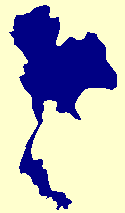
Flora of Thailand
Euphorbiaceae

 |
|
 |
Goto on this page:
Lour., Fl. Cochinch. ed. 1, 2: 598, 610. 1790; Kruijt, Biblioth. Bot. 146: 7. 1996; G.L.Webster, Ann. Missouri Bot. Gard. 81: 123. 1994; Esser, Blumea 44: 200. 1999; in Radcl.-Sm., Gen. Euphorbiacearum: 379. 2001; in Welzen & Chayam., Fl. Thailand 8, 2: 571. 2007; G.L.Webster in Kubitzki, Fam. Gen. Vasc. Pl. 11: 194. 2014.— Stillingfleetia Bojer, Hortus Maurit.: 284. 1837.— Seborium Raf., Sylva Tellur.: 63. 1838.— Stillingia sect. Triadica (Lour.) Baill., Étude Euphorb.: 511. 1858.— Sapium sect. Triadica (Lour.) Müll.Arg., Linnaea 32: 121. 1863.— Excoecaria sect. Triadica (Lour.) Müll.Arg. in DC., Prodr. 15, 2: 1210. 1866.
Trees, monoecious. Indumentum absent, although some organs erose-ciliate. Stipules ovate to triangular. Leaves alternate, sometimes apically crowded, simple, symmetric; petiole usually glandless or apically with two glands; blade orbiculate to elliptic, base cordate to acute to attenuate, margin entire, apex obtuse to mucronate to acuminate, upper surface with a pair of glands on the base (sometimes more on the petiole apex), lower surface papillate, often with a row of a few submarginal glands not touching the margin, secondary nerves distinct, lowermost pair originating from the very leaf base and forming the basal leaf margin, veins reticulate. Inflorescences terminal and in axils of uppermost leaves, spike-like thyrses, yellowish, unbranched, pistillate flowers at base of staminate part; bracts of staminate cymules basally with a pair of glands touching the axis of the thyrse or slightly decurrent. Flowers actinomorphic, petals and disc absent. Staminate flowers (3-)5-8 per cymule, pedicelled in bud; calyx 3-6-lobed; stamens 2 or 3, filaments longer than anthers; pistillode absent. Pistillate flowers pedicelled; calyx 3-lobed, glandless or sometimes with marginal glands; ovary 3-locular; stigmas undivided. Fruits capsules, glabrous, septa largely remaining at central column. Seeds attached to the central column for a considerable time after ripening, with a pale to whitish sarcotesta.
Probably three or four species, all in Asia and mostly distributed in E. Asia (Cochinchine, China); only one species in Thailand, up to Sulawesi (Indonesia) and Palawan (Philippines). Classification: Subfam. Euphorbioideae, tribe Hippomaneae, subtribe Hippomaninae.
Triadica cochinchinensis Lour., Fl. Cochinch. ed. 1, 2: 610. 1790; ed. 2, 2: 749. 1793; Esser, Blumea 44: 201, fig. 7, map 7; Harvard Pap. Bot. 7: 18. 2002; in Welzen & Chayam., Fl. Thailand 8, 2: 573, Fig. 91, Plate XXX: 2. 2007.— Stillingia discolor Champ. ex Benth., Hook. J. Bot. Kew Gard. Misc. 6: 1. 1854.— Sapium discolor (Champ. ex Benth.) Müll.Arg., Linnaea 32: 121. 1863; Burkill, Dict. Econ. Prod. Malay Pen. 2: 1960. 1935; Airy Shaw, Kew Bull. 26: 329. 1972; Whitmore, Tree Fl. Mal. 2: 129. 1973; ‘t Mannetje & Jones, PROSEA 4, Forages: 252. 1992.— Excoecaria discolor (Champ. ex Benth.) Müll.Arg. in DC., Prodr. 15, 2: 1210. 1866; Kruijt, Biblioth. Bot. 146: 88. 1996.— Excoecaria loureiroana Müll.Arg. in DC., Prodr. 15, 2: 1217. 1866.— Sapium cochinchinense (Lour.) Pax & K.Hoffm. in Engl., Pflanzenr. IV.147.v: 252. 1912.— Shirakia cochinchinensis (Lour.) Hurus., J. Fac. Sci. Univ. Tokyo, Sect. 3, Bot. 6: 318. 1954; Kruijt, Biblioth. Bot. 146: 93. 1996.
Shrubs to trees, up to 25 m high; deciduous with crown bare for 1-2 weeks. Stipules 0.3-2 by 0.6-0.7 mm. Leaves pinkish when young, withering blood red; petiole 1-3 cm long; blade slightly ovate to elliptic, (2.5-)3.5-7 by 1-3 cm, length/width ratio c. 2, base cuneate to attenuate (to obtuse), apex obtuse to acuminate, upper surface with a pair of basal glands, lower surface whitish-papillate to whitish-glaucous, with 0-3 glands per side, secondary nerves 9-17 pairs. Inflorescences: staminate part 25-50 by 7-10 mm. Staminate flowers: pedicel 2-3 mm long; calyx c. 1 mm long; stamens with filaments 0.75-1 mm long when flowering, anthers 0.4-0.5 mm long. Pistillate flowers 0-13 per thyrse; pedicel 2-4 mm long; calyx 1-2 mm long, rarely with basimarginal glands; stigmata 2-3 mm long. Fruits globular, 7-9 by 7-9 mm, base often clavate, slightly or not sulcate, apex rounded. Seeds 3.5-5 by 3.5-4.5 by 2.5-3 mm.
T h a i l a n d.— NORTHERN: Chiang Mai (Doi Inthanon, Pang Tawn); NORTH-EASTERN: Nong Khai (Phu Wua Wildlife Sanctuary); EASTERN: Nakhon Ratchasima (Khao Yai); PENINSULAR: Phangnga, Trang (Ko Chang).
D i s t r i b u t i o n.— N.E. India, Myanmar, Thailand, Indochina (type) up to Taiwan and E. China, and W. Malesia: Malay Peninsula (including Singapore), Sumatra, N. Borneo (Sabah, Sarawak), Philippines (Palawan), and Sulawesi.
E c o l o g y.— Primary forest, disturbed forest, young secondary forest of 5 years, and thickets, on hillsides and steep slopes, also in dry places. Soil: yellow and granitic sand. Fairly common. Altitude 10-1,000 m. Flowering and fruiting the whole year through.
V e r n a c u l a r.— Sali nok (ตาตุ่มตรี) (Northern); ta khian thao (ตาเคียนเฒ่า) (South-eastern); pho nok (โพนก), som (ส้อม), ya chong (หญ้าจง), yuea chong (เหยือจง) (Peninsular).
U s e s.— ‘t Mannetje & Jones (1992) cite the species as a timber tree, additionally as a minor forage plant. The wood is soft, light and not of great use (Burkill, 1935). The seed coat contains less palmitic acid than that of T. sebifera, and is therefore not used.